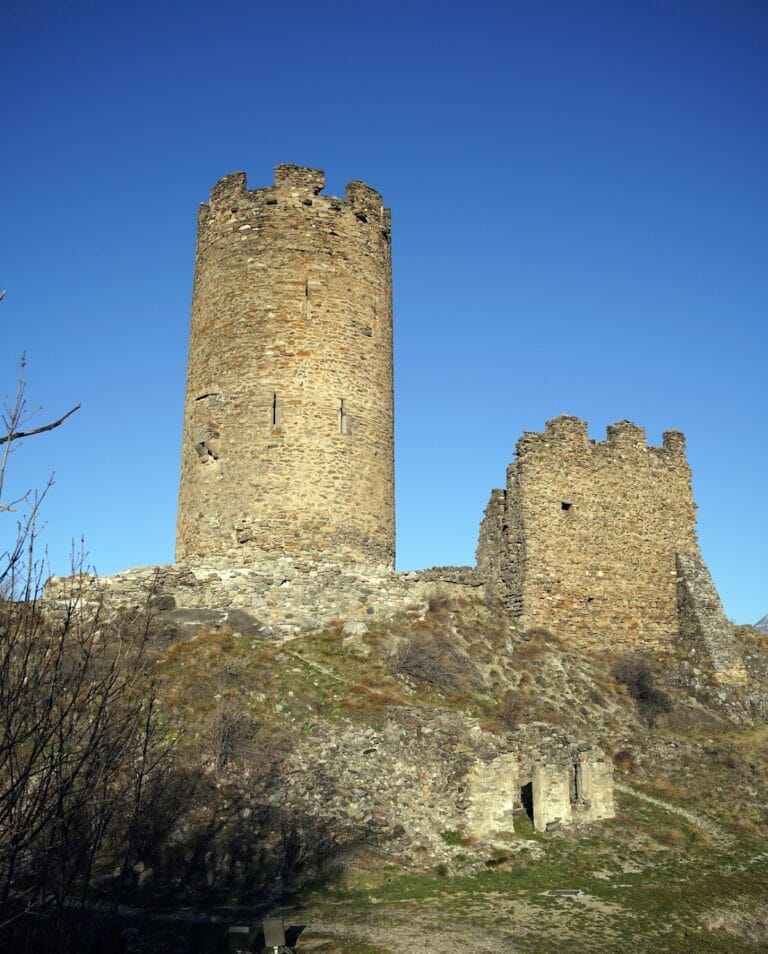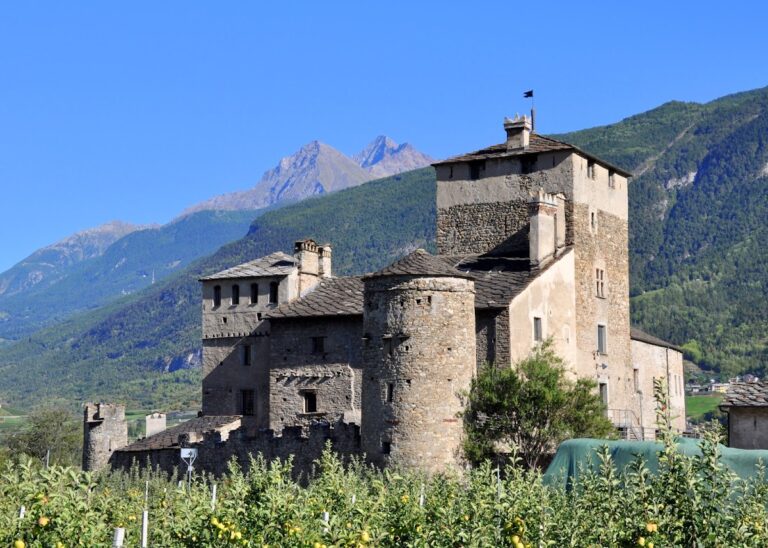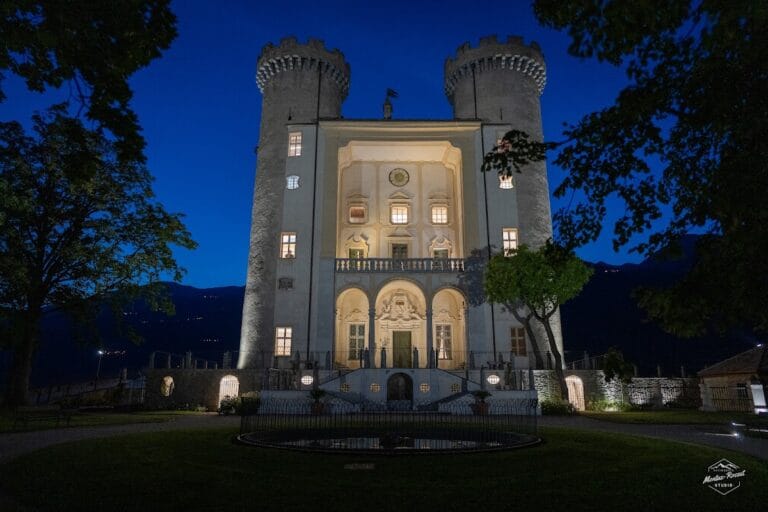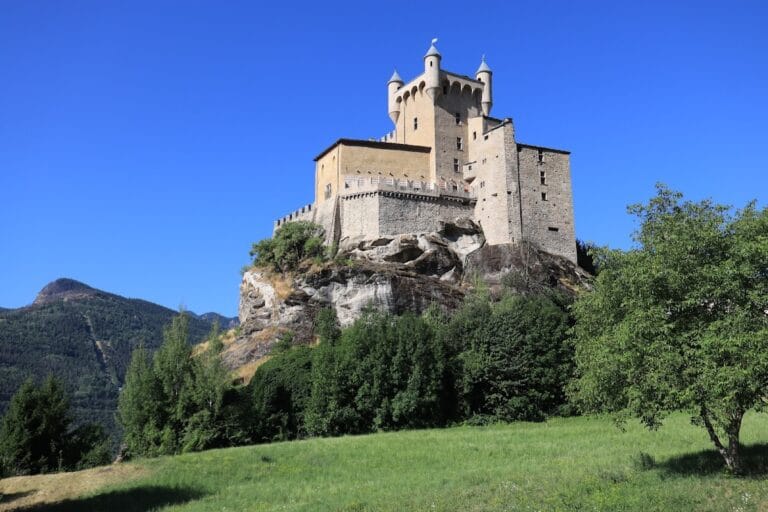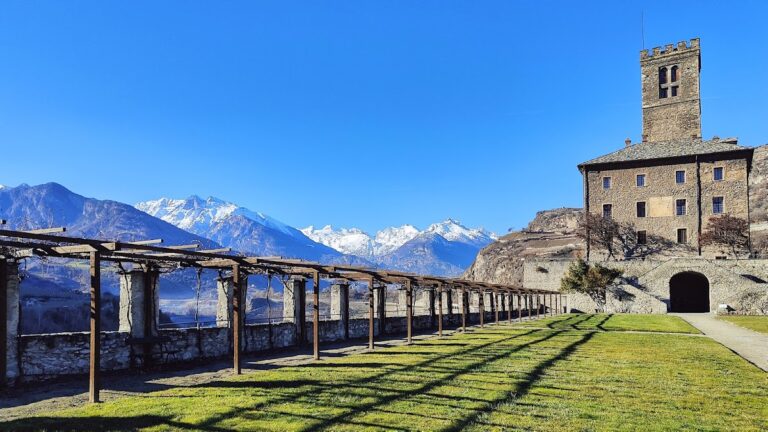Pont d’Aël: A Roman Aqueduct and Bridge in the Aosta Valley
Visitor Information
Google Rating: 4.6
Popularity: Medium
Google Maps: View on Google Maps
Official Website: valledaostaheritage.com
Country: Italy
Civilization: Roman
Remains: Infrastructure
History
The Pont d’Aël is located near the village of Pont d’Aël in the comune of Aymavilles, within the Aosta Valley region of northern Italy. This area was part of the Roman Empire and the aqueduct was constructed by Roman engineers in 3 BC. It served the Roman colony of Augusta Praetoria Salassorum, now modern Aosta, which was newly established at that time.
In the Roman period, the aqueduct was built primarily to support agricultural irrigation and to supply water for washing mineral ores extracted from nearby mines. Contrary to earlier assumptions, it was not used to transport iron ore nor to provide water directly to the town of Augusta Praetoria, which instead relied on the nearby Buthier river. The construction was privately funded by Caius Avillius Caimus, a mine manager from Padua, as recorded in a large inscription on the bridge’s north side.
After the Roman era, the aqueduct gradually lost its original function. Over centuries, it fell out of use as an irrigation and mining water supply system. The site was first documented in the mid-16th century by Emanuele Filiberto Pingone, who sketched the structure. Later, in the 19th century, Baron de Malzen and Édouard Aubert produced further illustrations. Archaeological excavations and measurements took place in 1864 and again in 1930. A detailed survey and study was completed by Mathias Döring in 1996, clarifying the aqueduct’s purpose and construction.
Today, the Pont d’Aël is recognized for its historical and environmental significance. It is part of a protected area noted for its unique microclimate and dry, warm-adapted vegetation.
Remains
The Pont d’Aël aqueduct extends about 6 kilometers, channeling water from the Grand Eyvia river to irrigate farmland west of Aosta. The water flows down the Cogne valley with a gentle slope, reaching fields situated 50 to 150 meters above the nearby Dora Baltea river. The channel itself is a half-gallery, approximately 1.20 meters wide, carved directly into the rocky hillside. This design allowed workers to excavate from multiple points simultaneously, speeding construction. In flatter sections, the aqueduct runs on terraces as a brick-lined canal covered with tiles.
The most striking feature is the Pont d’Aël bridge, which spans the Grand Eyvia river canyon. The bridge measures 60.46 meters in length and 2.26 meters in width. It crosses a gorge about 12 meters wide and 66 meters deep with a single arch spanning 14.24 meters. The arch is notable for being constructed from a single keystone. Originally, the bridge likely rose three stories high, reaching 22.15 meters in total height.
The lower level of the bridge contains a corridor 50.35 meters long and nearly 4 meters high. This passage allowed inspection of the water channel to detect leaks or damage, especially from frost. It is illuminated by two rows of small windows on each side. Above this corridor, the third floor may have served as an open walkway. Adjacent to the bridge is a narrow tunnel, part of the aqueduct system, measuring 1.90 meters tall and 1 meter wide.
An inscription on the north side credits Caius Avillius Caimus for funding the construction. Over time, the aqueduct ceased its original use, and today the water channel serves as a walking path. The Pont d’Aël bridge remains one of only three intact Roman bridges in the Aosta Valley, alongside Pont-Saint-Martin and Pont de Pierre in Aosta.





